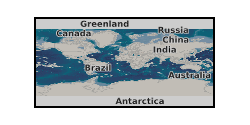Phosphorus
Type of resources
Available actions
Topics
Keywords
Contact for the resource
Provided by
Years
Formats
Update frequencies
-

Geochemical data for the Huainan Basin include Fe speciation data; P speciation data; elemental Al, Fe, P, Mn, Sr data, total organic carbon; C isotope ratios of organic C and carbonates. Geochemical data for the Taoudeni Basin and the Anamikie Basin include Fe speciation data; P speciation data; and elemental P and total organic carbon analyses.
-

The data set includes stable oxygen isotope data measured on the non-labile (HCl-extractable) phosphorus fraction (δ18O-PO4), extracted from each 1 cm layer of sediment core. This sediment core (LG3A) was dated via correlation with a parallel core (LG3C) using 8 age-depth tie points, for which core chronology was established by analysing 210Pb activity at the British Geological Survey Inorganic Geochemistry Laboratories.
-

Isotope tracing data for 14C, 15N and 33P tracing between plants and symbiotic fungi in Lycopdiella inundata, Anthoceros and Phaeoceros sp. and Lunularia cruciata. All plants tested and traced in atmospheric CO2 conditions of 440 ppm [CO2] and 800 ppm [CO2]. Datasets includes total mass of plants and soils, Bq in each component of experimental systems and values in Bq and mg where appropriate.
-

The dataset includes abundances of phosphorus redox species (phosphate, phosphite, pyrophosphate) and metal abundances for a collection of mafic and ultramafic rocks. These include peridotites, komatiites and basalts from a variety of locations and ages. The results show that reduced and polymerized phosphorus is present in unaltered mafic and ultramafic rocks, in addition to phosphate. Therefore, oceanic crust can serve as a source of reactive phosphorus species.
 NERC Data Catalogue Service
NERC Data Catalogue Service